If you’re looking to introduce a new and unique ingredient to your family dinners, look no further than spaghetti squash. This vibrant yellow vegetable isn’t just visually appealing; it’s also rich in flavor and texture, making it a fabulous stand-in for traditional spaghetti, especially for those with gluten sensitivities. Its natural, stringy texture post-cooking mimics the consistency of pasta, offering a delicious base for your favorite sauces. Not only is it a delightful dish to experience, but it’s also packed with vitamins and minerals, giving your family both taste and nutrition in one go.
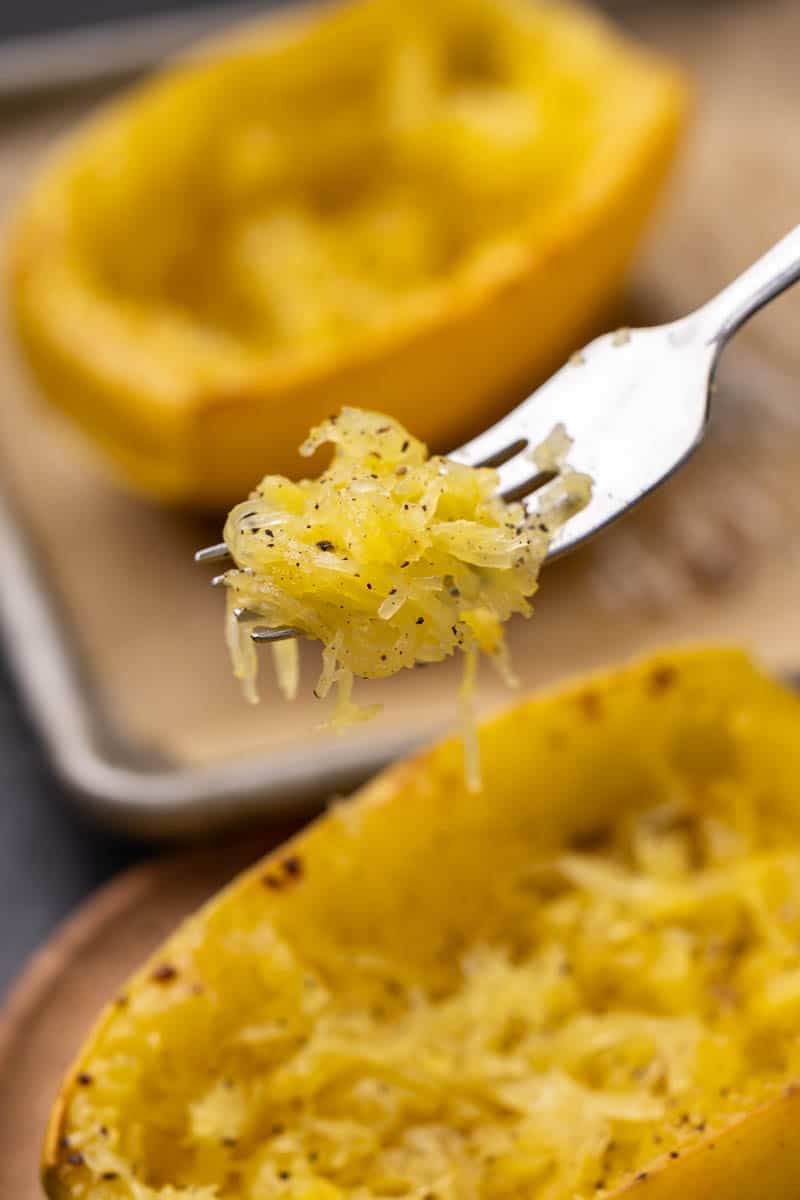
Frequently Asked Questions
No, it’s a vegetable! When cooked, the interior transforms into strands that resemble spaghetti, hence the name.
Certainly! Cooking spaghetti squash in an air fryer at 375 degrees Fahrenheit for 25-30 minutes offers a quick and equally delicious outcome.
Cutting a spaghetti squash can be a bit challenging due to its hard exterior.
Start by placing the squash on a stable surface.
Using a sharp, sturdy chef’s knife, first cut off the top and bottom ends to create a flat base.
Then, position the squash upright on one of these flat ends.
Carefully slice the squash vertically down the center, applying steady pressure and using a rocking motion if needed.
Remember to always keep your fingers tucked in and away from the blade for safety.
Once cut, you can proceed to scoop out the seeds and stringy bits from the center
You absolutely can roast spaghetti squash seeds, exactly how you would roast (and eat) pumpkin seeds. They are a delicious snack, and a great way to use every part of your squash.
Absolutely! It pairs well with a variety of sauces and seasonings.
Visual Guide to Making Spaghetti Squash
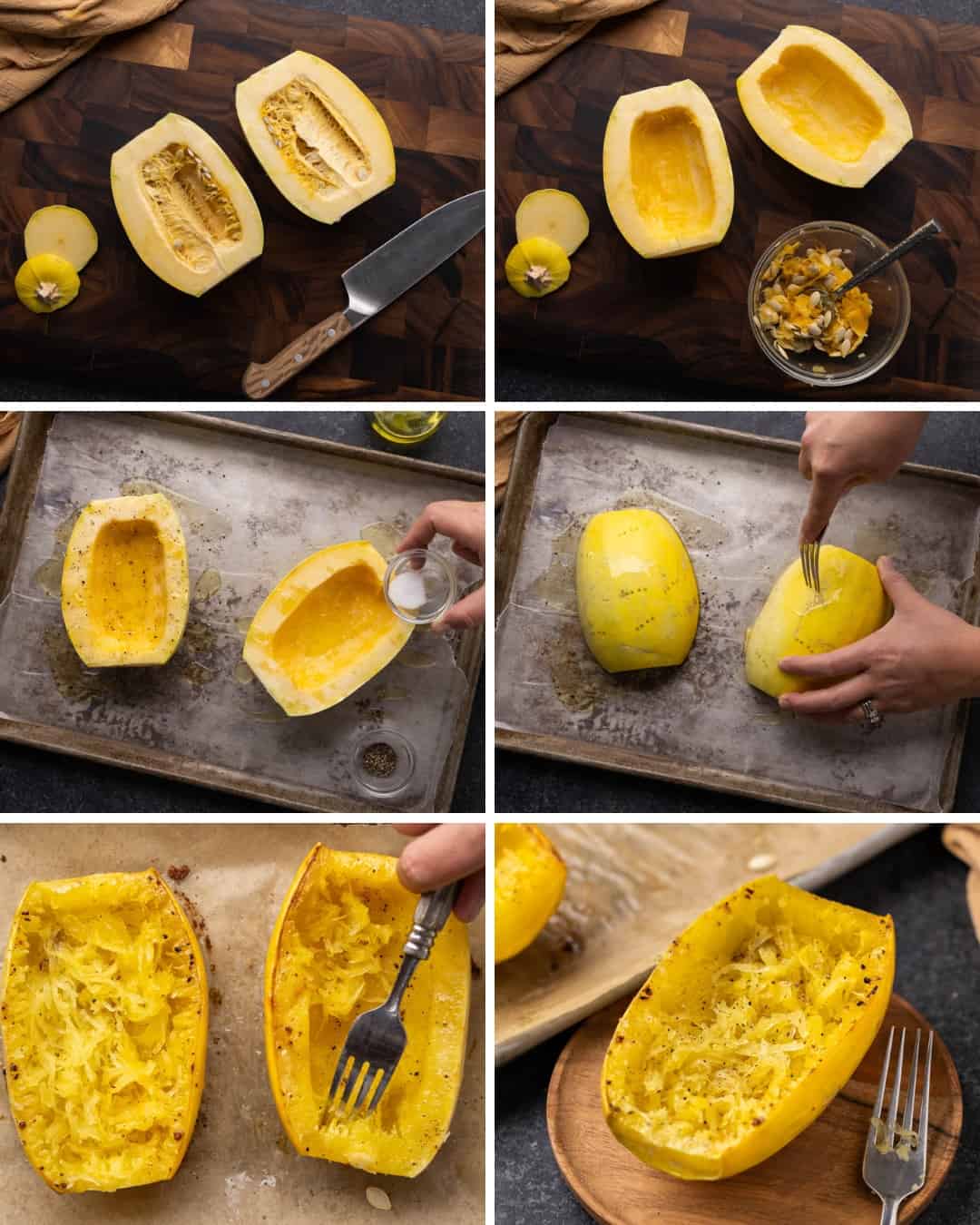
Choosing the Perfect Spaghetti Squash
When shopping for spaghetti squash, there are a few key attributes to look out for to ensure you pick a top-quality vegetable:
- A ripe spaghetti squash will have a smooth, matte, and slightly dull skin without any soft spots, cracks, or dark blemishes.
- The color should be a consistent shade of golden yellow; avoid those with green patches, as they might be underripe.
- The squash should feel heavy for its size, indicating it’s full of moisture and hasn’t dried out.
- Give it a gentle tap; a ripe one will produce a hollow sound.
- Lastly, a firm stem is a good sign of freshness.
By following these guidelines, you’re on your way to picking a spaghetti squash that’s flavorful, fresh, and ready for cooking!
Sauce Options
You can serve your baked spaghetti squash however you like! Enjoy it inside or outside the shell and with your topping of choice. Here are some ideas to inspire you:
- Butter, garlic, and parmesan cheese
- Homemade marinara sauce
- Pesto
- Classic bolognese sauce
- Fire roasted spaghetti sauce
- Simple brown butter garlic sauce
- Alfredo sauce
A Note on Cooking Time
You’ll see on the recipe card below that your roasted spaghetti squash will take between 40-50 minutes to cook. Please note that each oven is different and therefore holds heat differently. Plus, each squash will vary in size.
In order to know whether yours is perfectly cooked, take a fork and try to pull the spaghetti-like strands. When they come loose with ease and the texture is like al dente pasta, you’ll know it’s ready!
It’s always preferred to undercook it and have to pop it back in the oven for a few more minutes than to overcook it and end up with a mushy mess.
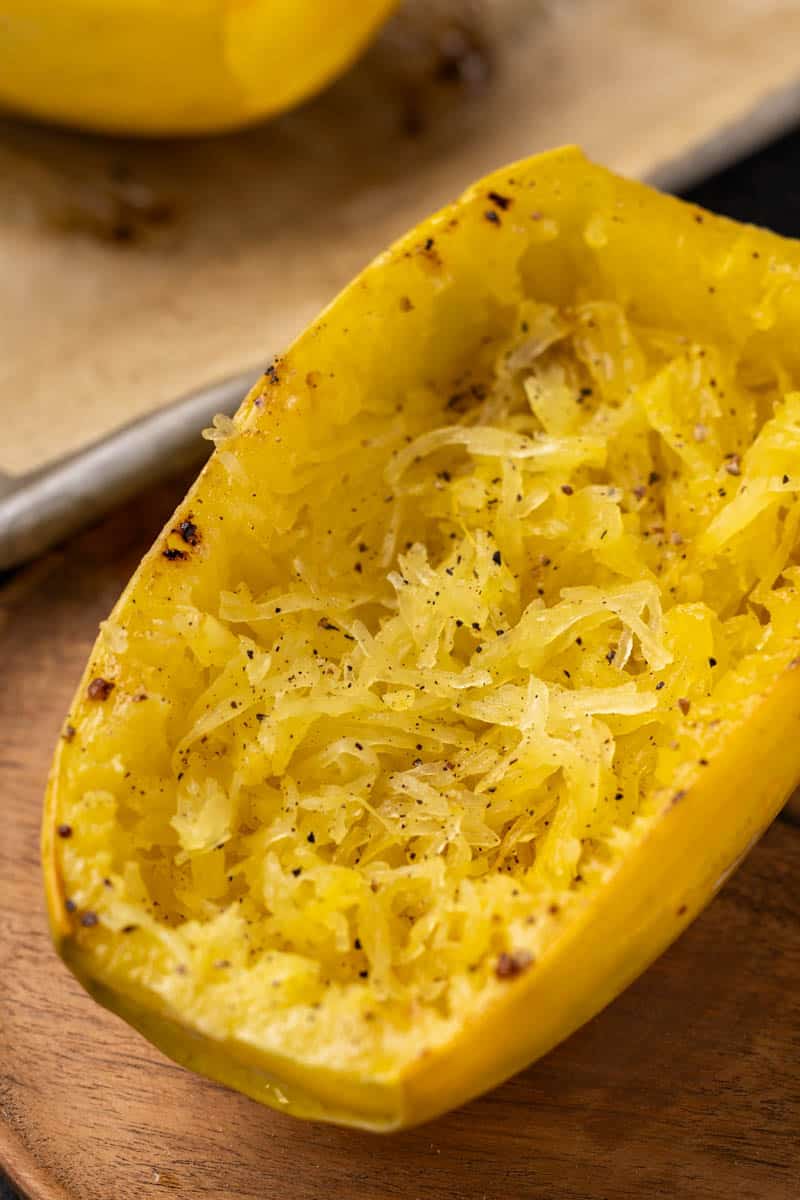
Freezing Instructions
Freezing cooked spaghetti squash is a great way to extend its shelf life while preserving its unique texture. Here’s a detailed guide on how to do it correctly:
Freezing Process:
- Cooling: Allow the cooked spaghetti squash to cool completely at room temperature. Avoid freezing while still warm as it can cause ice crystals to form, which will affect the texture upon thawing.
- Portioning: If you plan to use the squash in smaller quantities, portion it out before freezing. This prevents the need to thaw the entire batch when you only require a small amount.
- Pre-Freezing: To preserve the individual strands and prevent clumping, spread the cooled spaghetti squash on a baking sheet lined with parchment paper. Place the tray in the freezer for 1-2 hours until the strands are frozen individually.
- Packaging: Once the strands are individually frozen, transfer them to a freezer-safe bag or container. This step is crucial to maintain the texture, as pre-freezing prevents the strands from sticking together. Remove as much air as possible from the bags to prevent freezer burn, which can alter both taste and texture.
Thawing Process:
- Refrigerator Thawing: The ideal way to thaw spaghetti squash is by placing it in the refrigerator for several hours or overnight. This slow thawing process helps maintain the texture, preventing it from becoming mushy.
- Cooking After Thawing: Once thawed, the spaghetti squash might hold extra moisture. Before reheating or incorporating it into your recipe, gently press the squash with a paper towel to remove any excess liquid. This step is key to maintaining the ideal texture.
- Direct Cooking from Frozen: In some recipes, you can use the squash directly from frozen. Add it directly into soups, stews, or casseroles, and allow a little extra cooking time to compensate for the lower starting temperature.
Storage & Reheating Instructions
Cool the cooked spaghetti squash to room temperature before storing. Place it in an airtight container and refrigerate for up to five days.
For longer storage, follow freezing instructions above to freeze for up three months.
Main Courses to Serve With Spaghetti Squash…
Watch the video below where Caytlin will walk you through every step of this recipe. Sometimes it helps to have a visual, and we’ve always got you covered with our cooking show. You can find the complete collection of recipes on YouTube, Facebook Watch, or our Facebook Page, or right here on our website with their corresponding recipes.

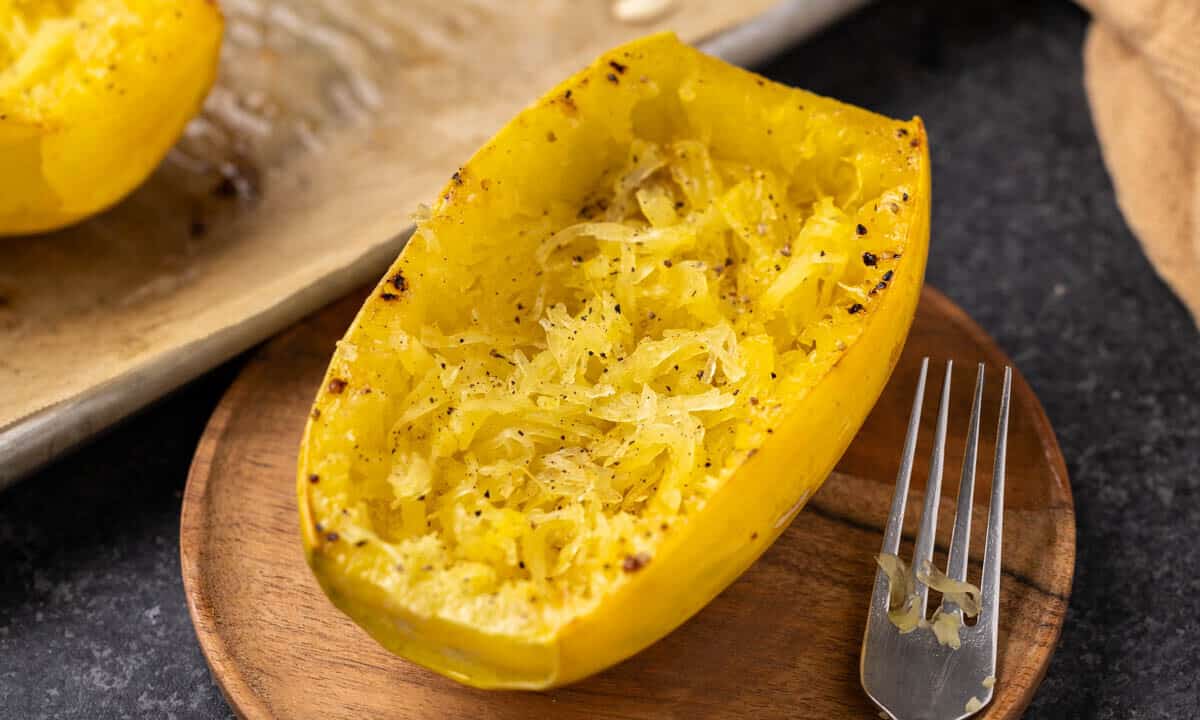
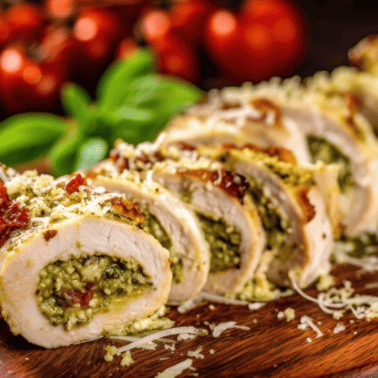
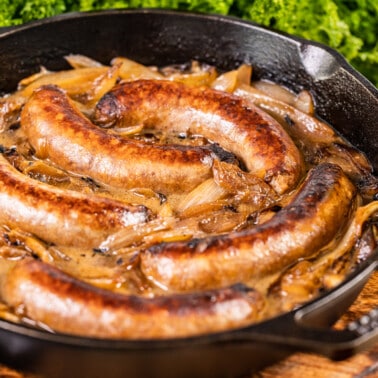
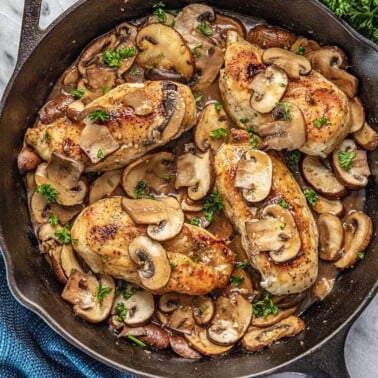
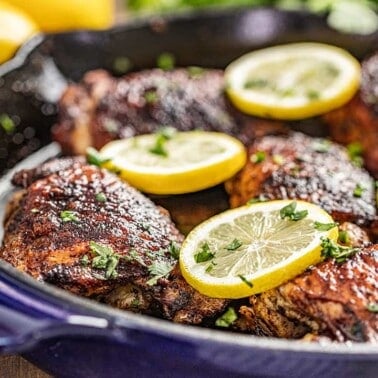
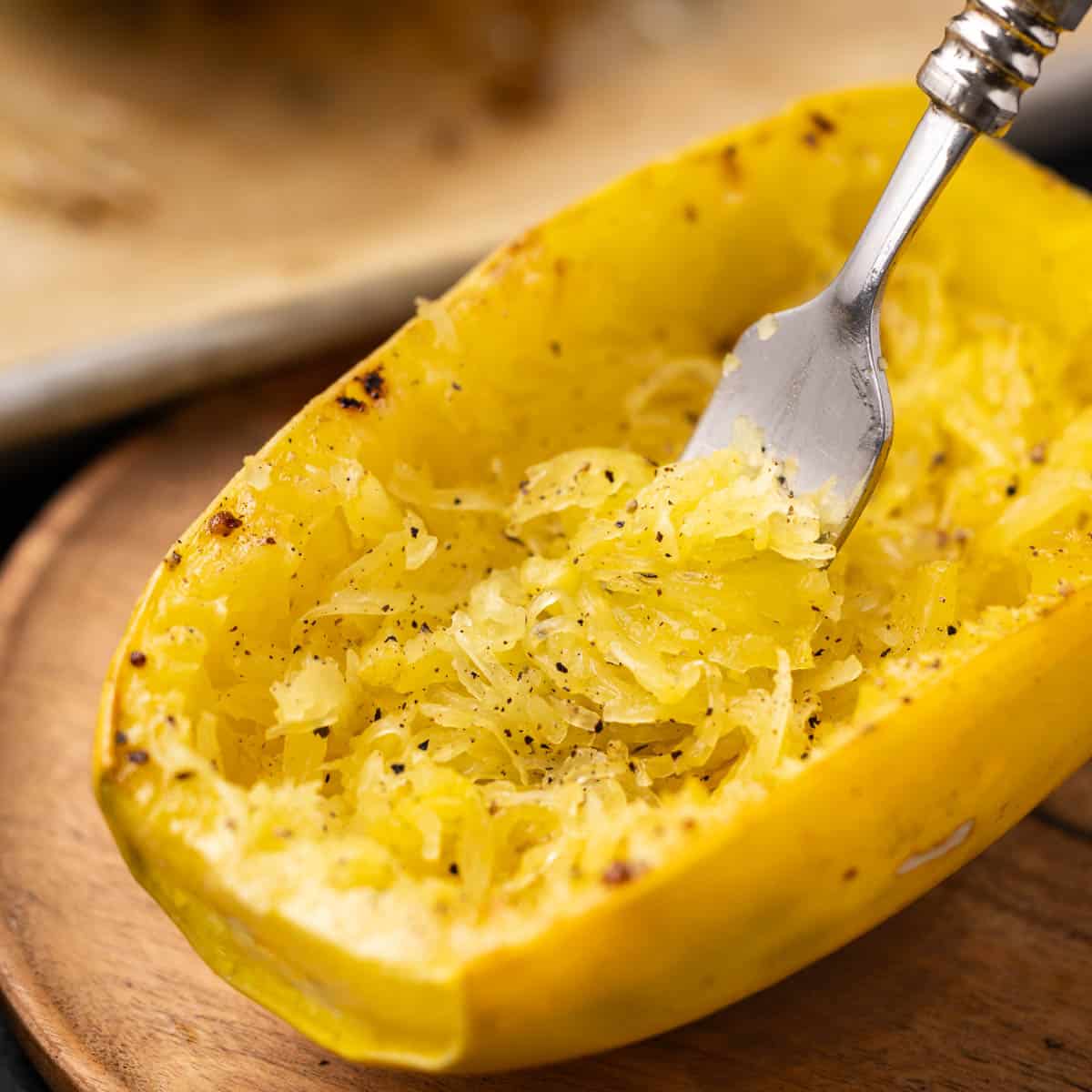
I like to pierce with a fork and microwave for about 5 minutes. I makes it easier to cut. After i microwave i place it cut side down on a sheet pan and roast until fork goes in easily. We like it with tossed with cream cheese and taco seasoning.
This is a perfect example of good content. You can tell that alot when into this post. Keep it up.